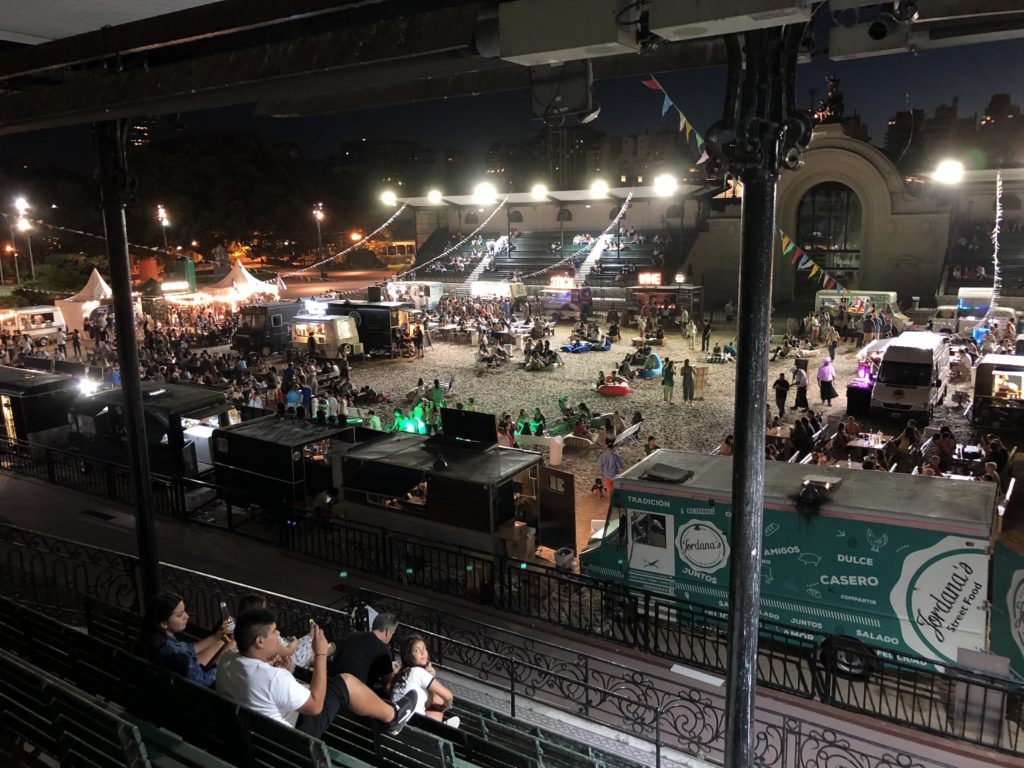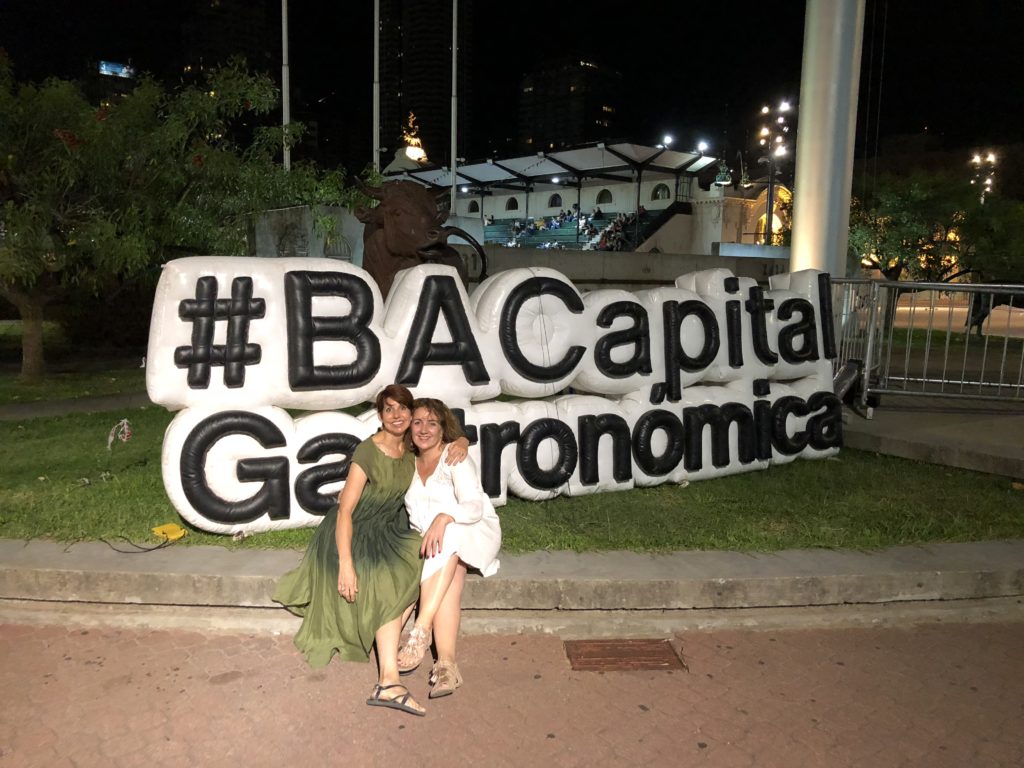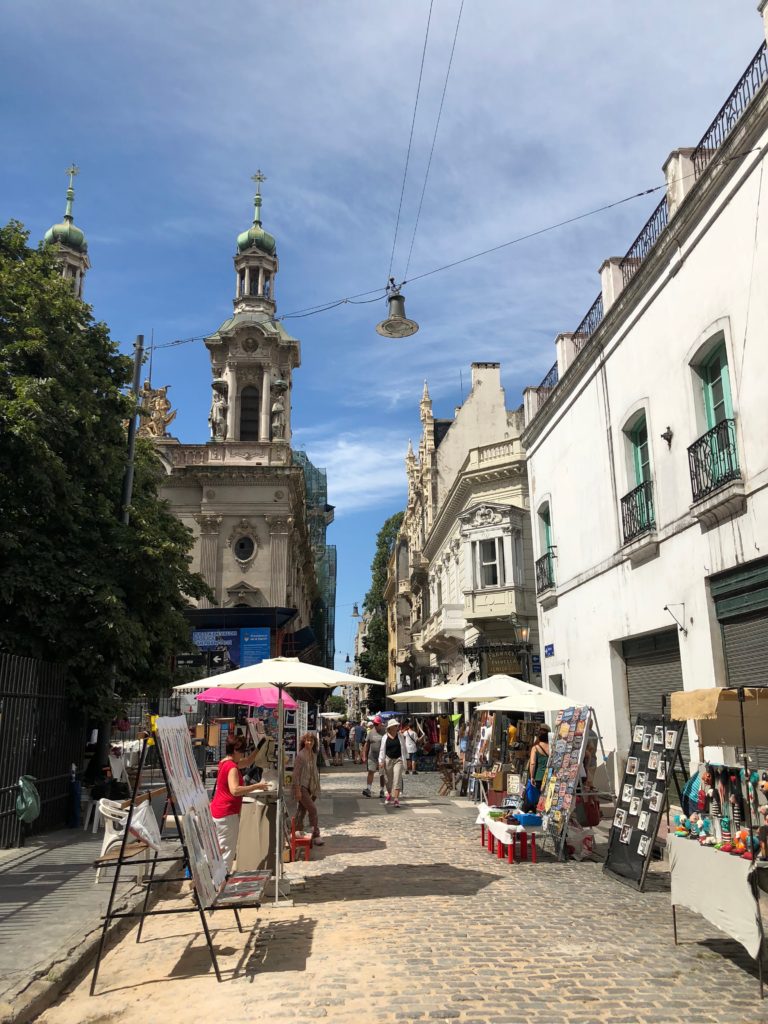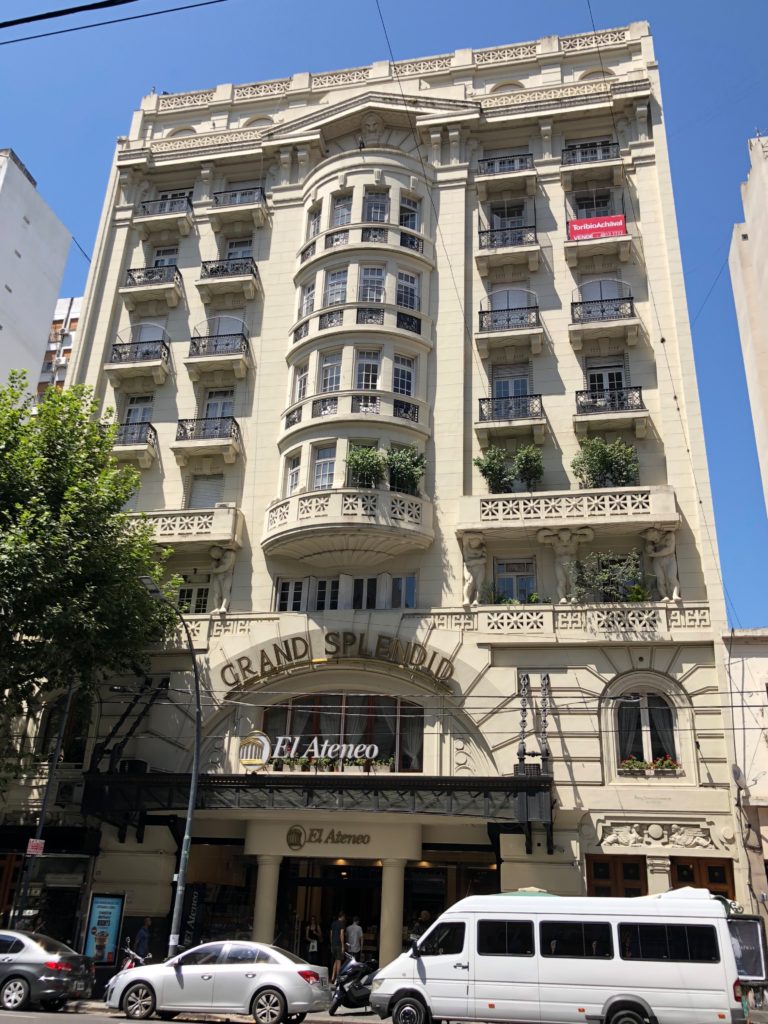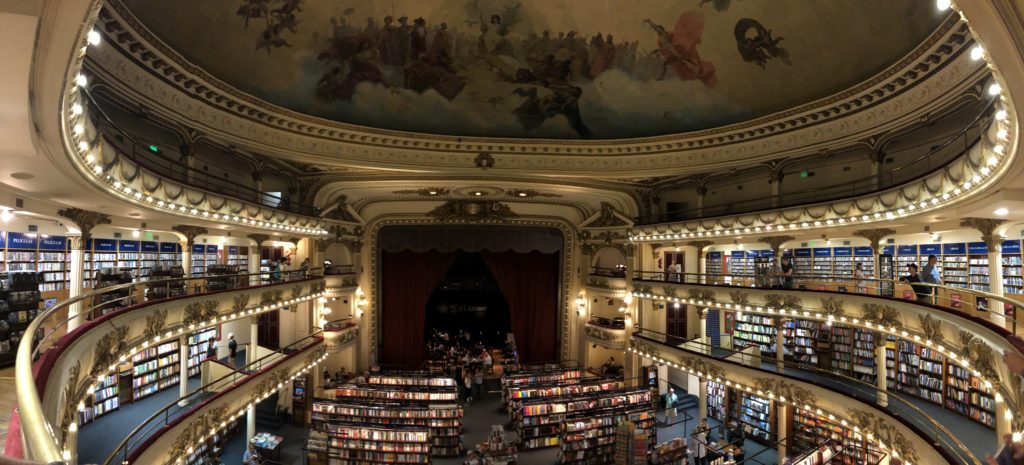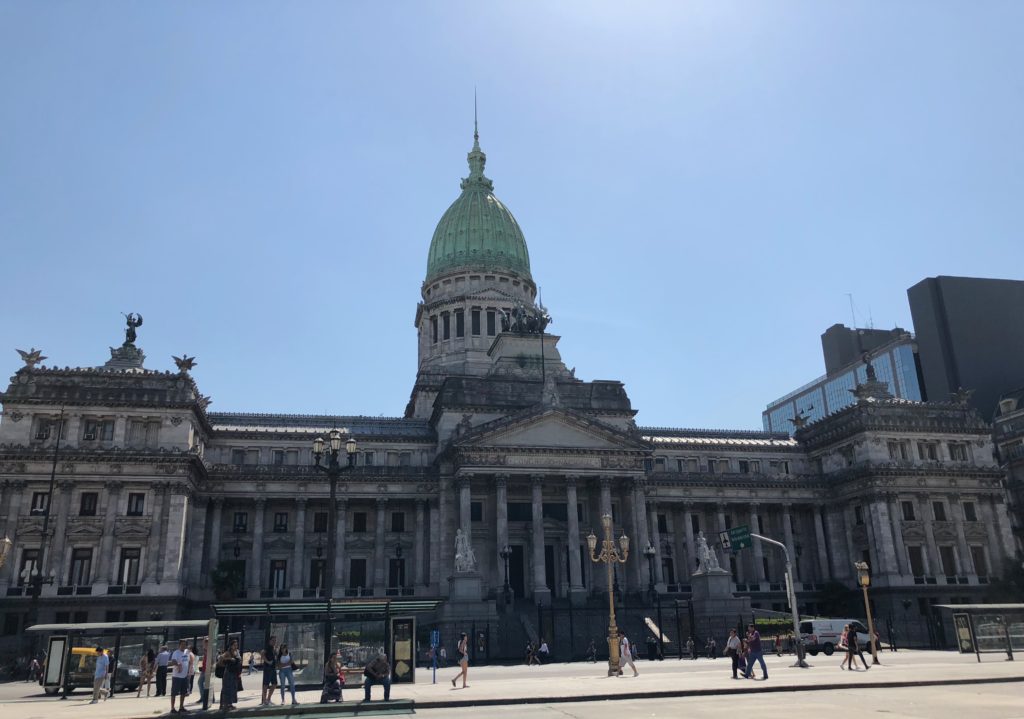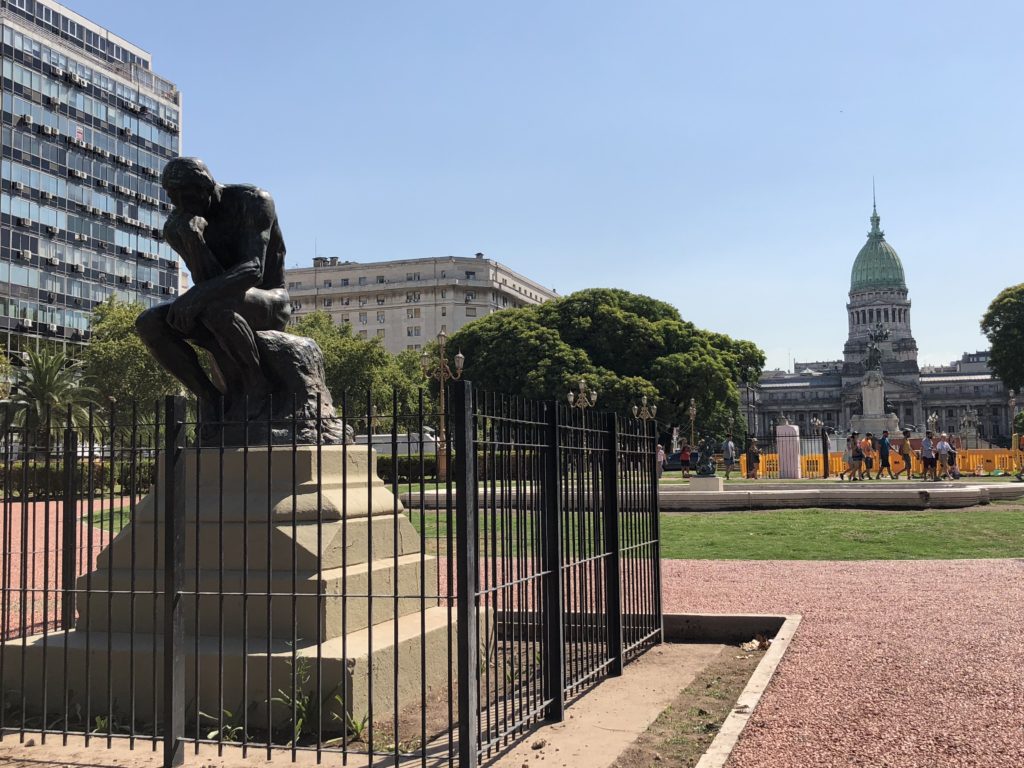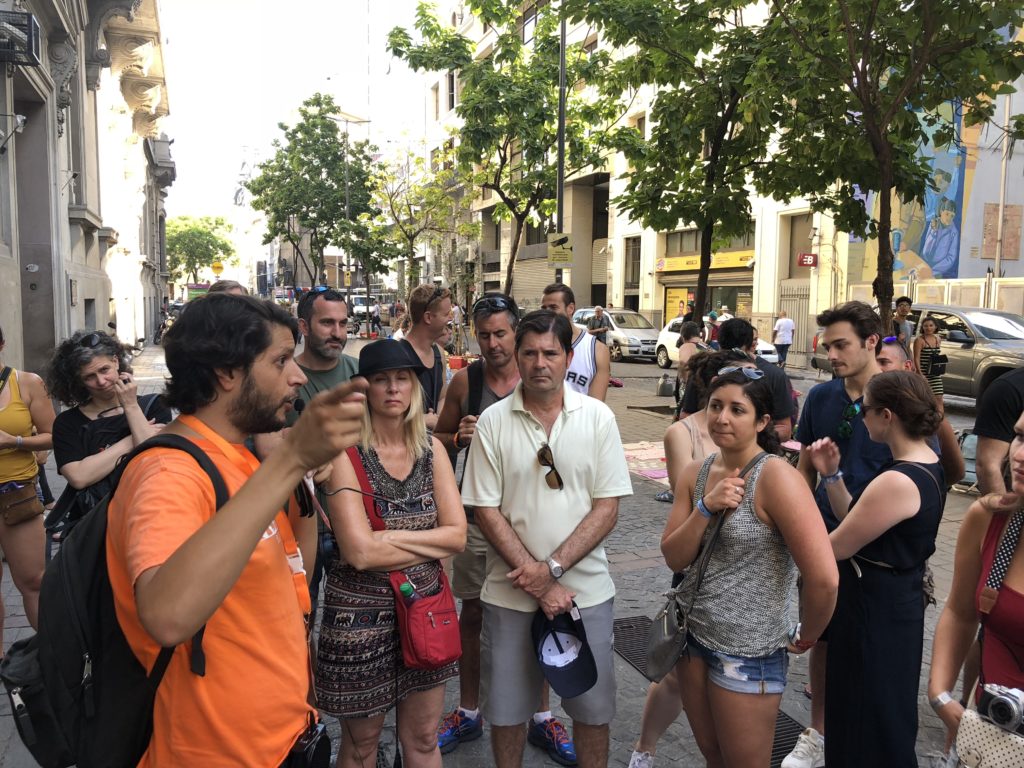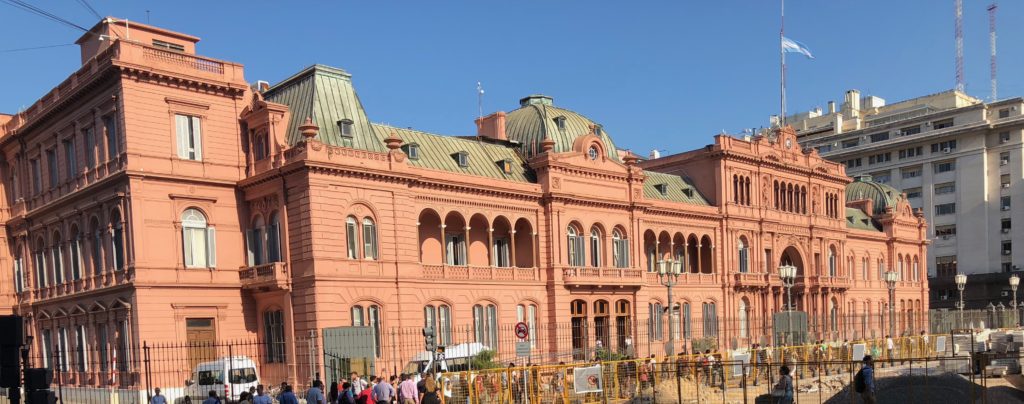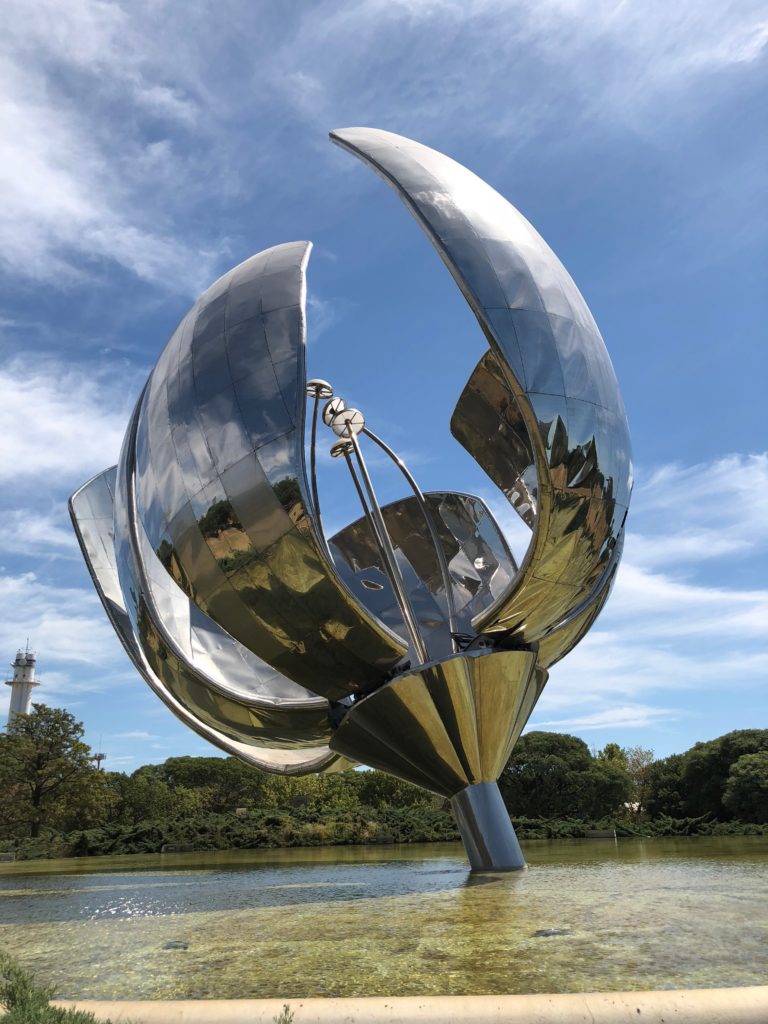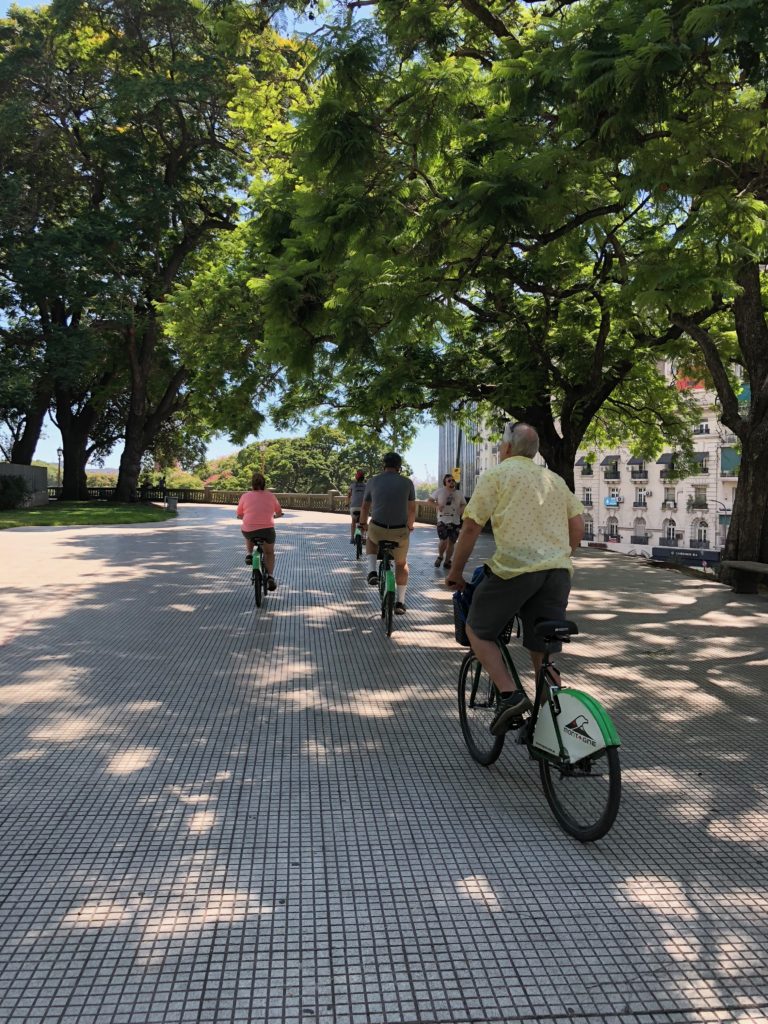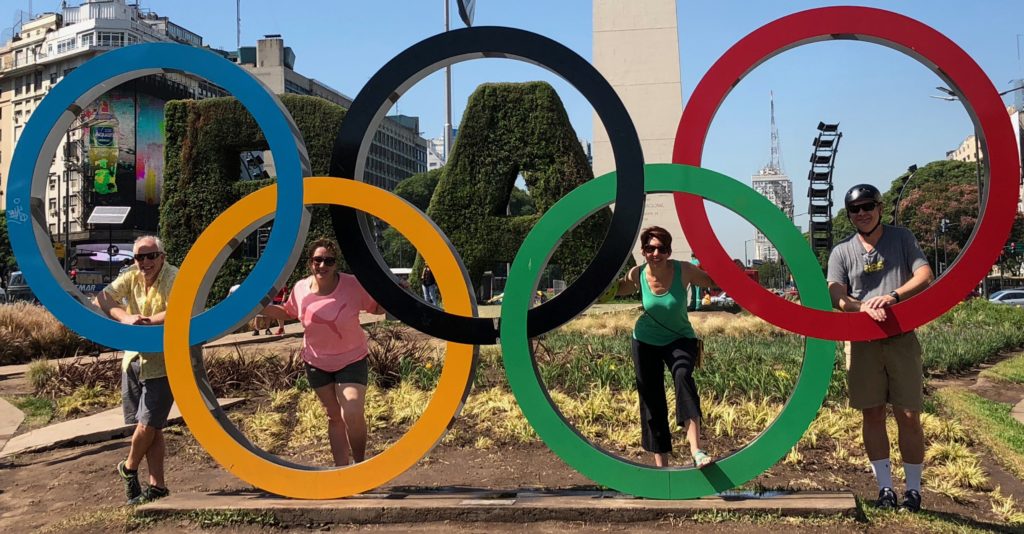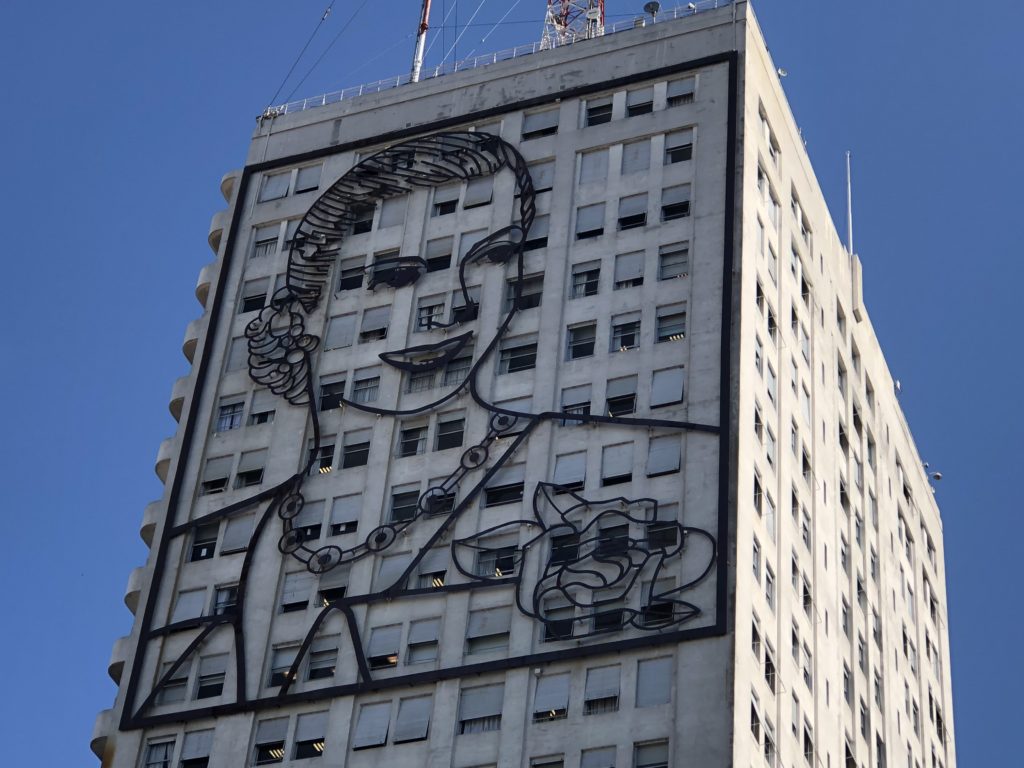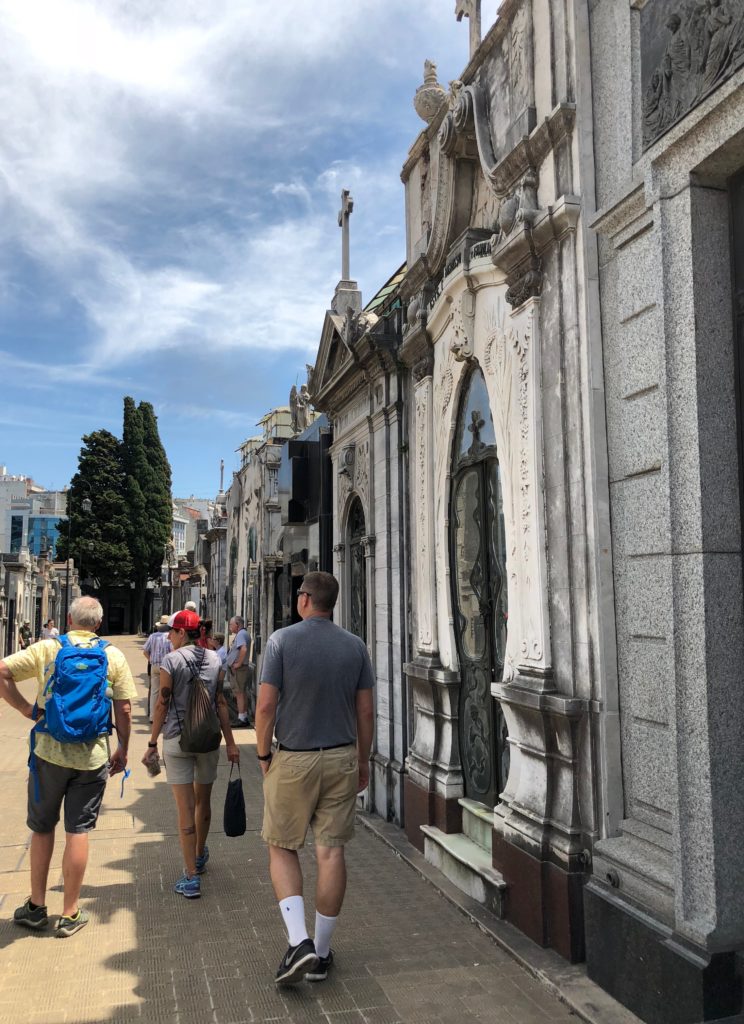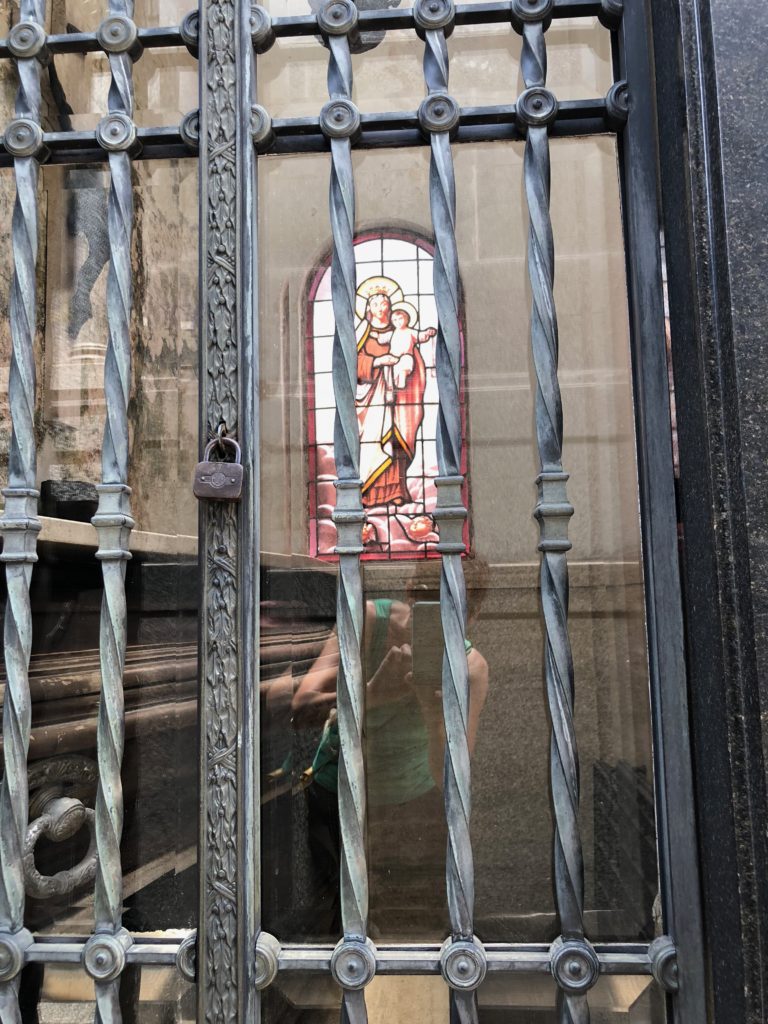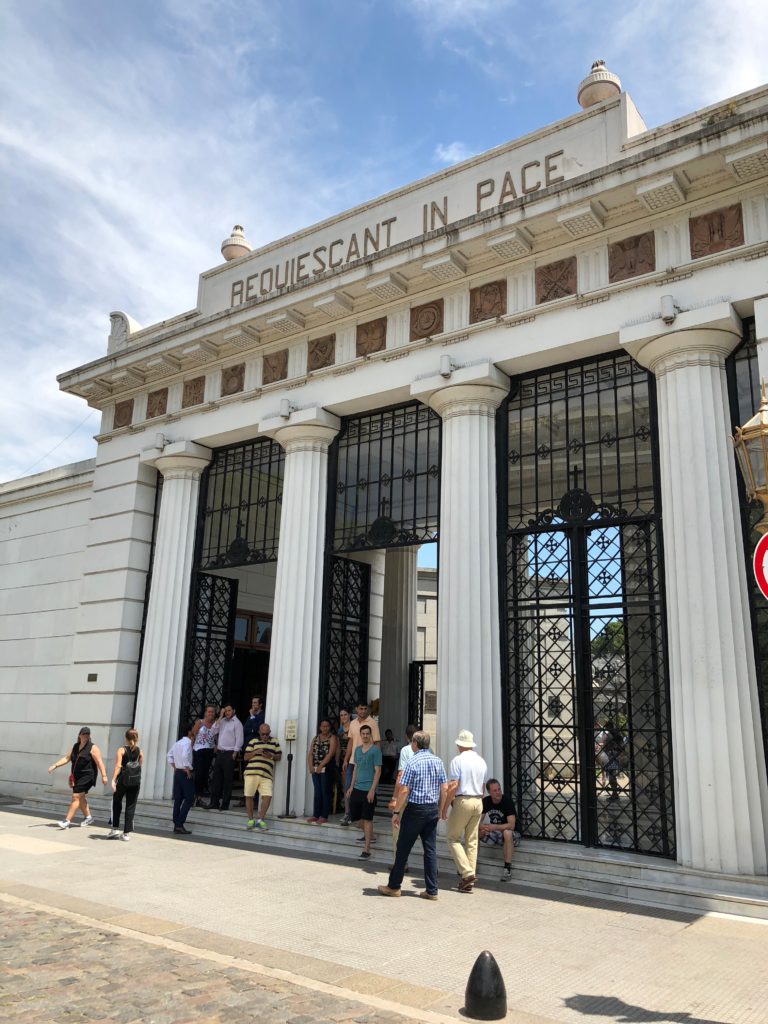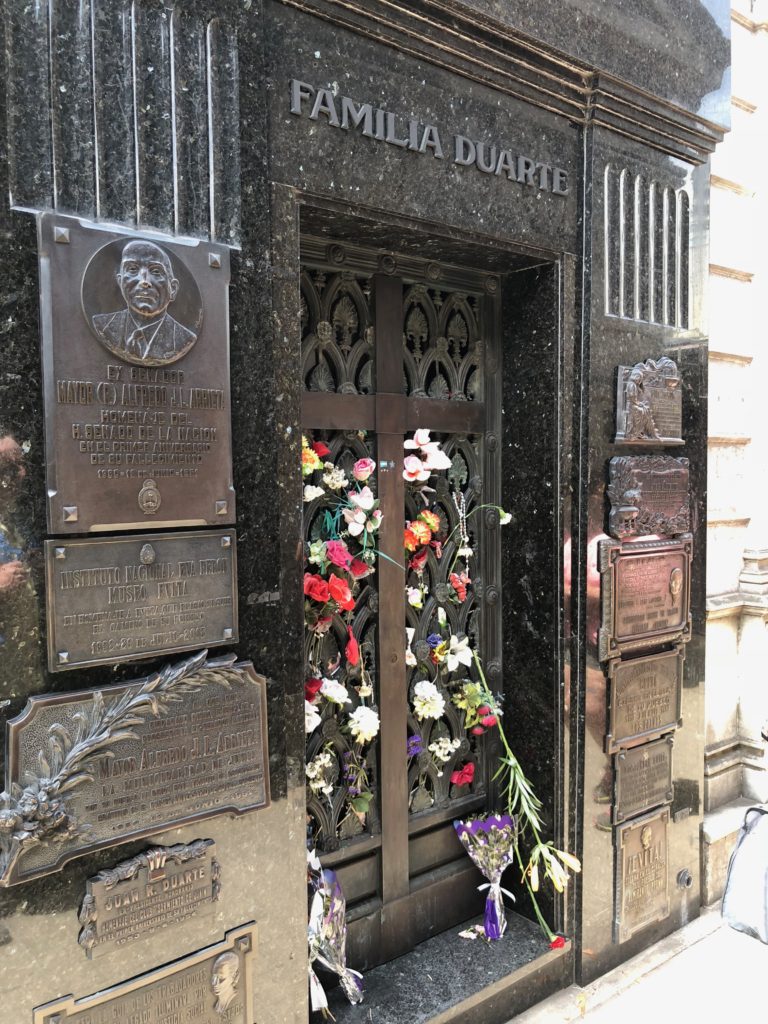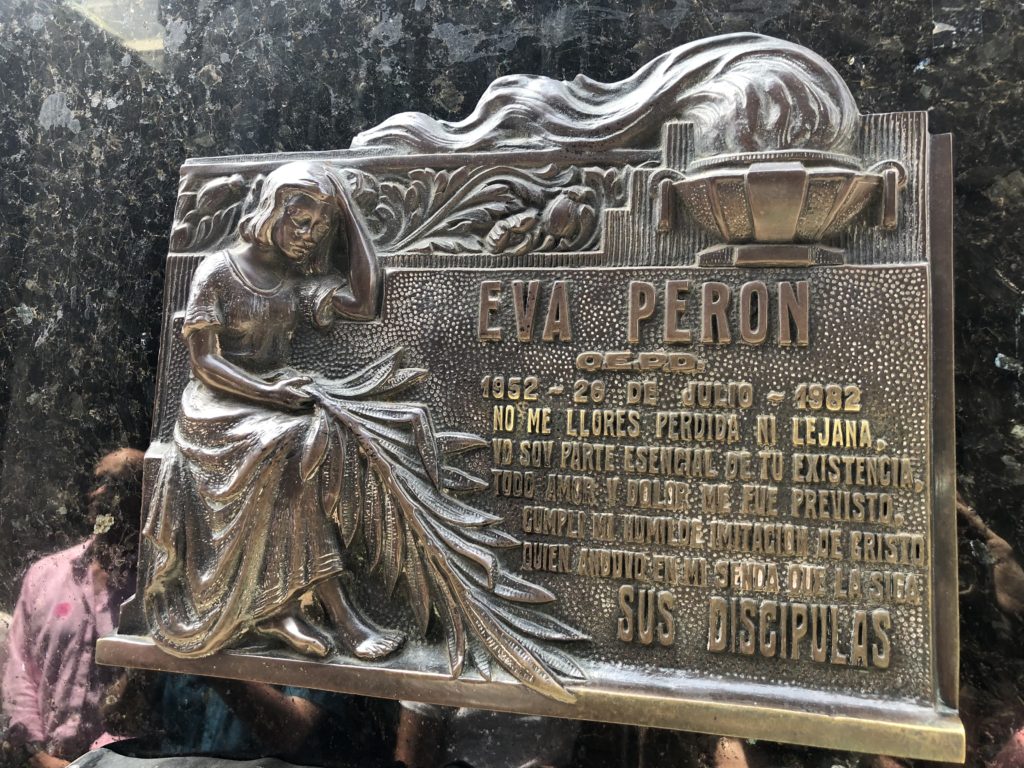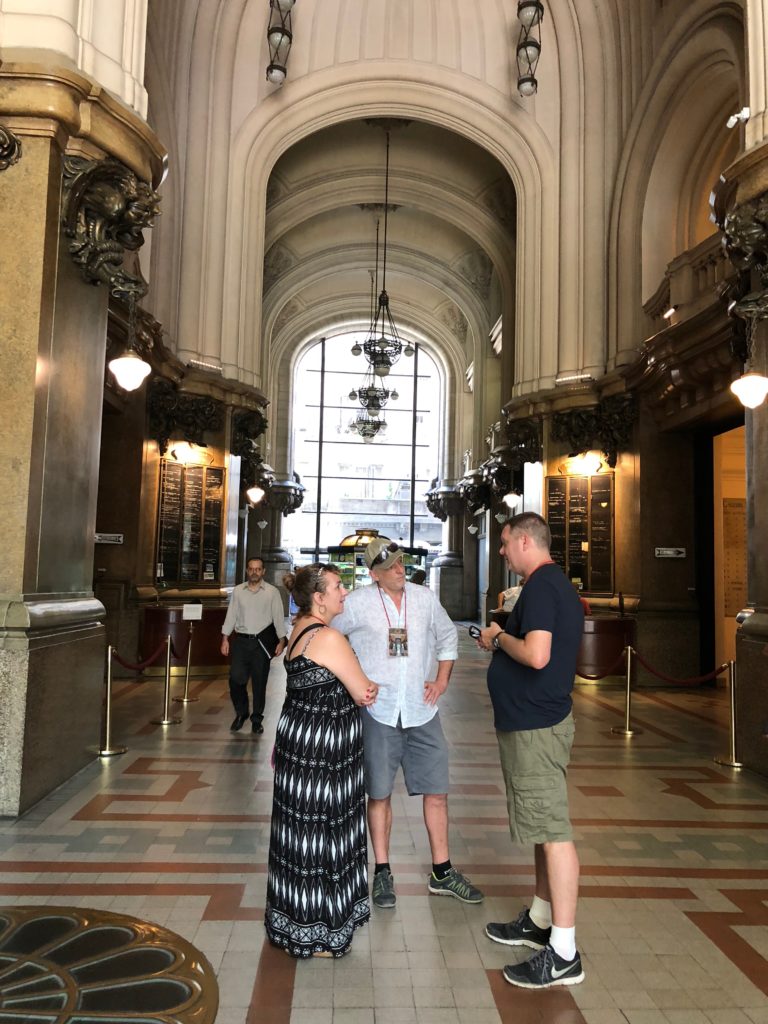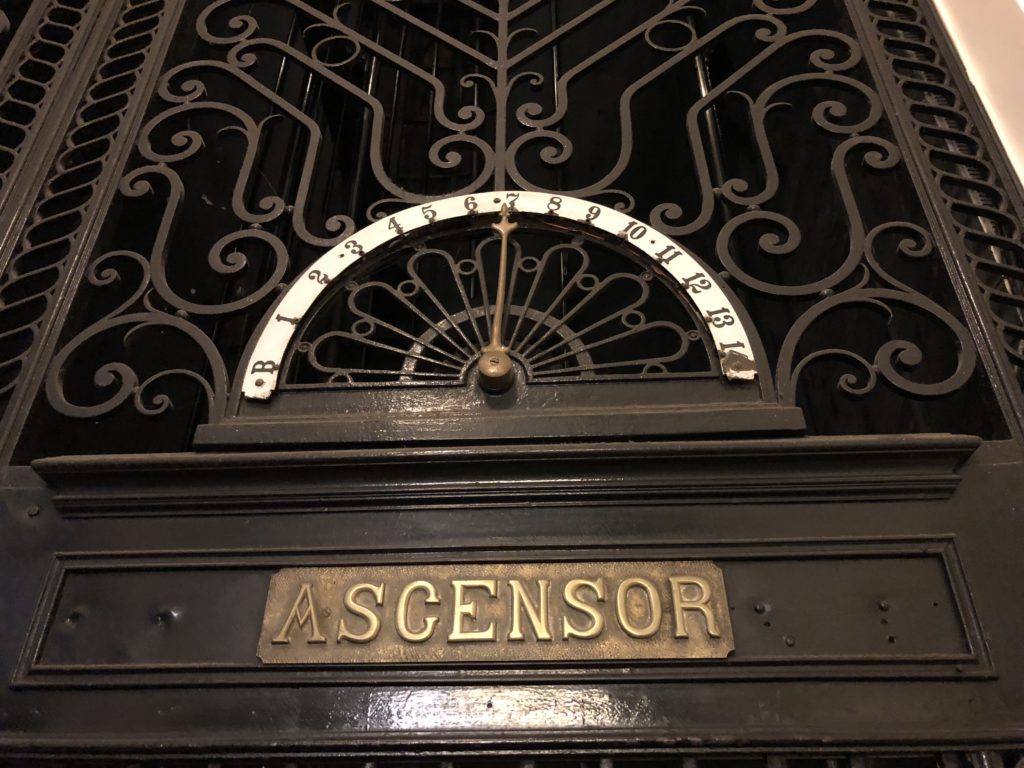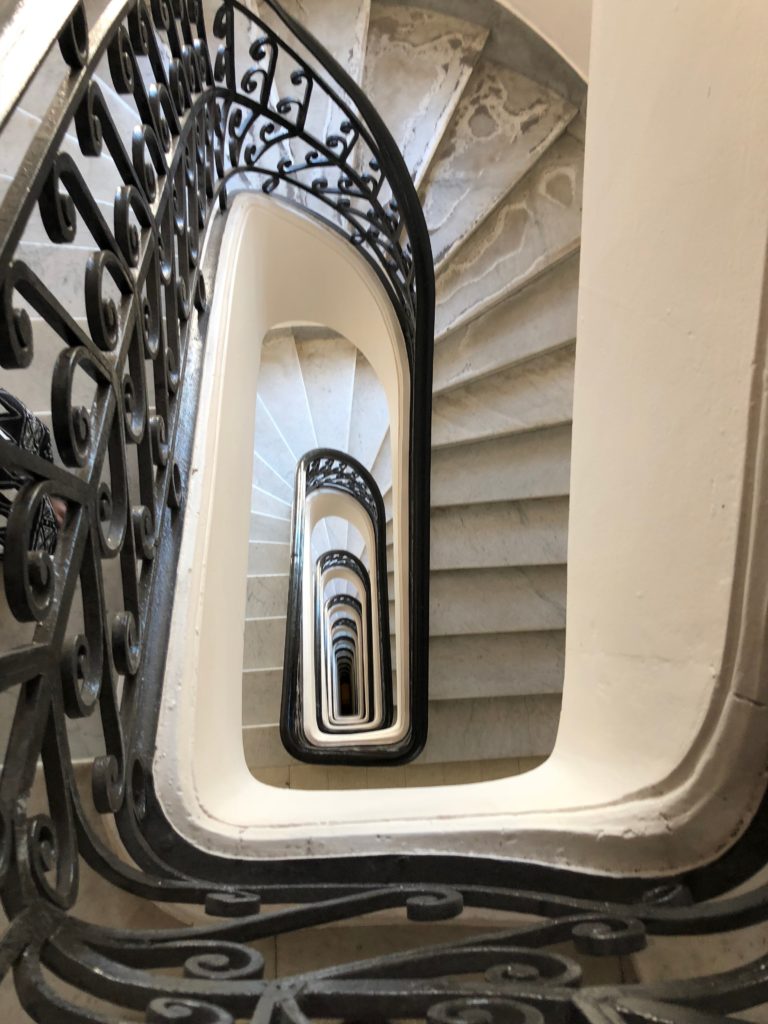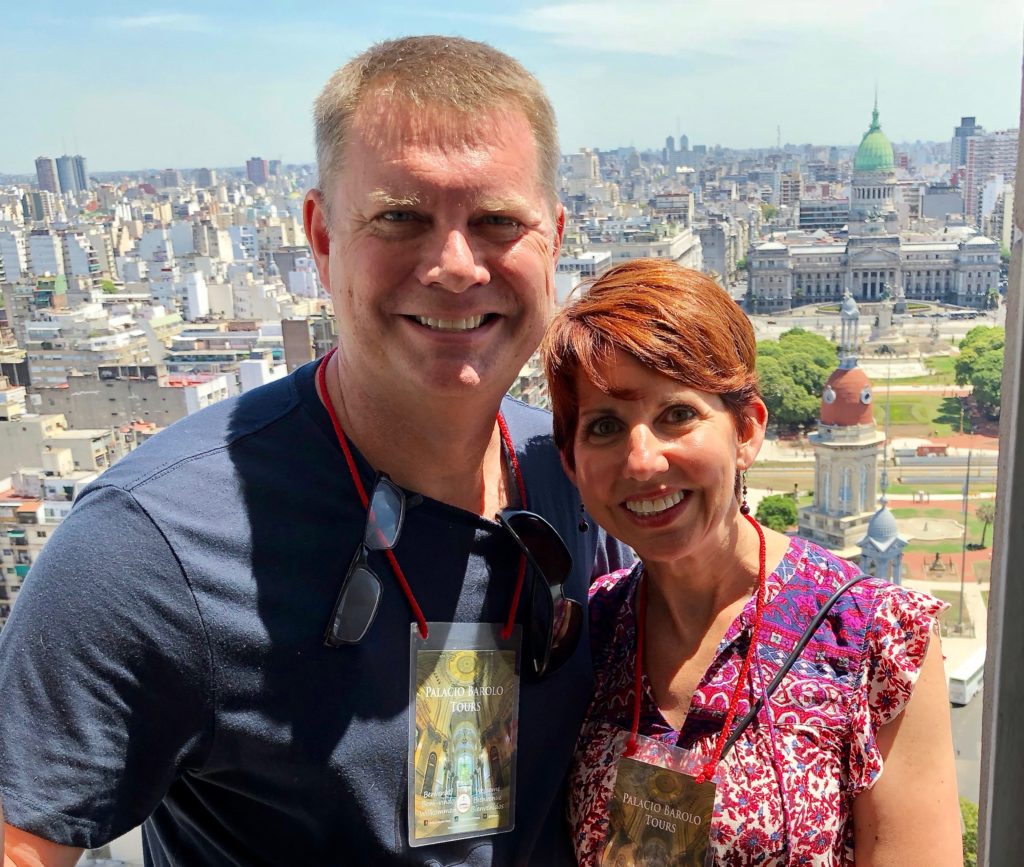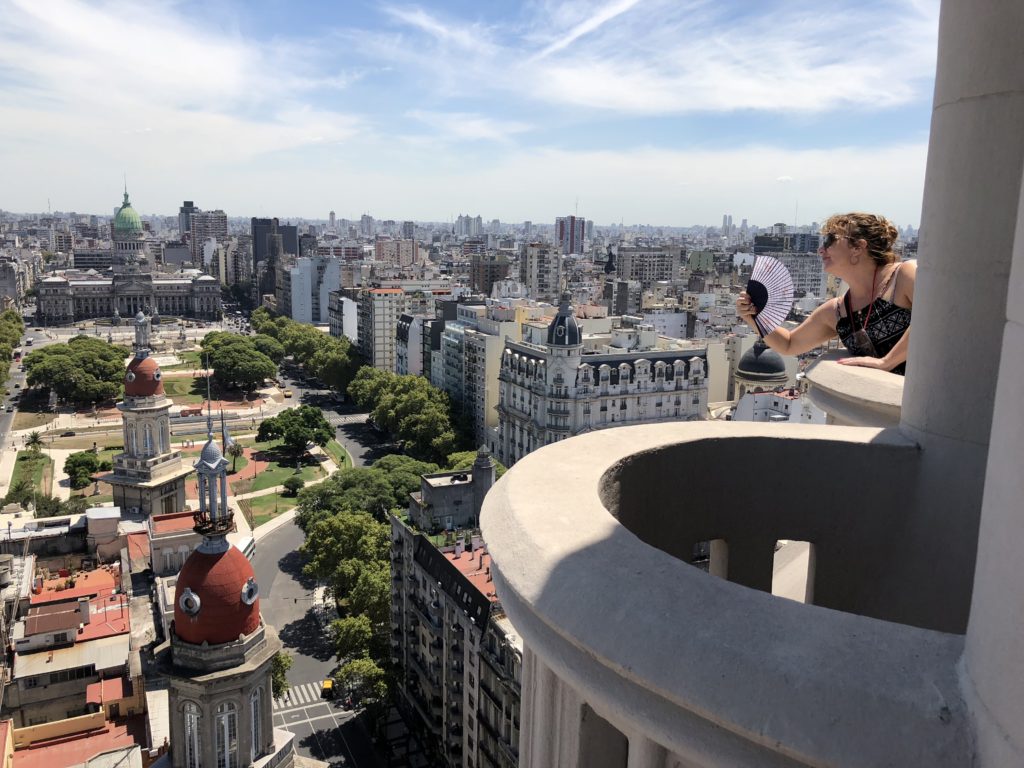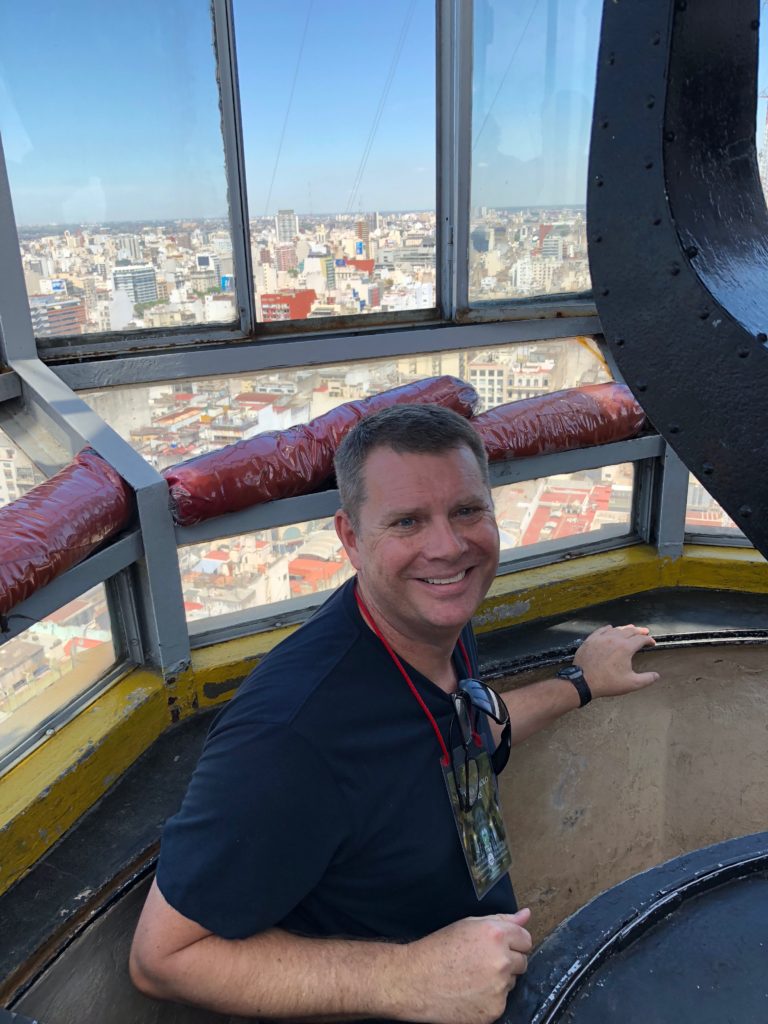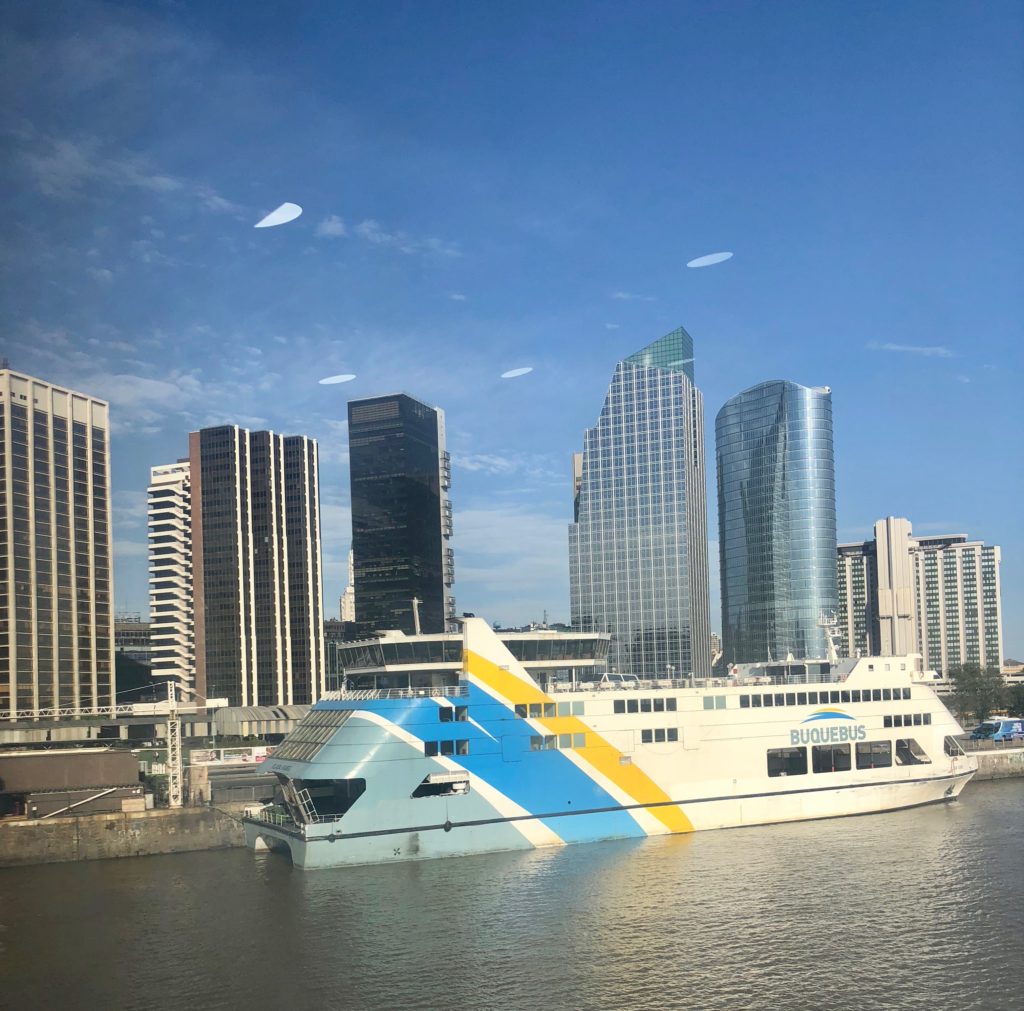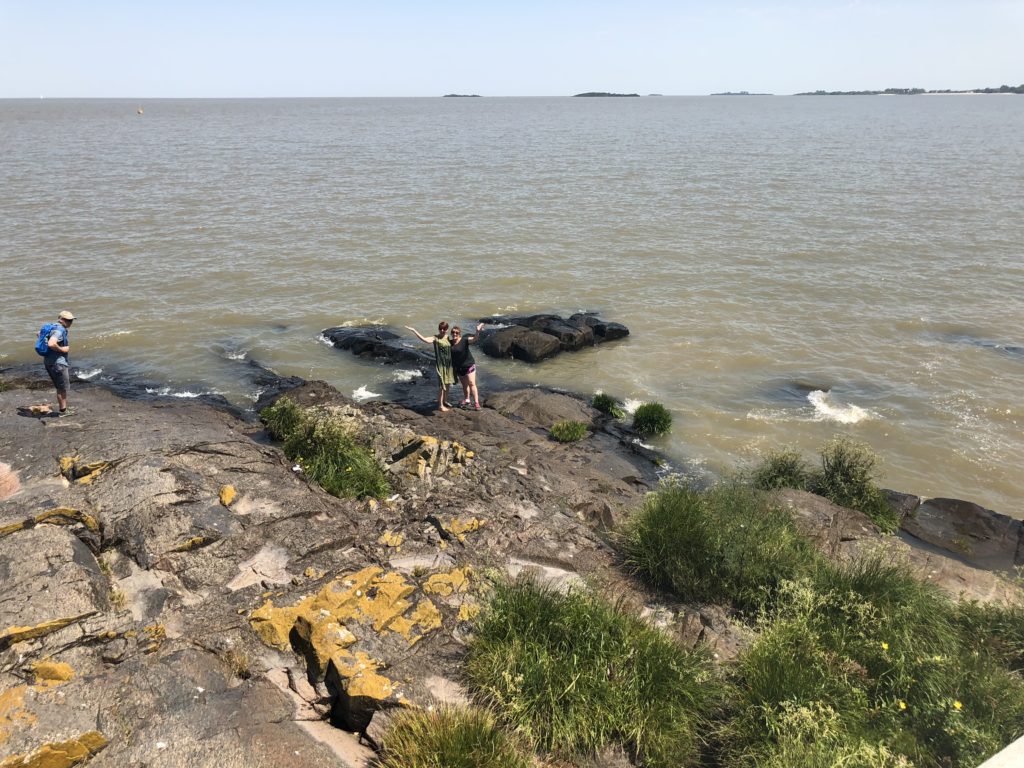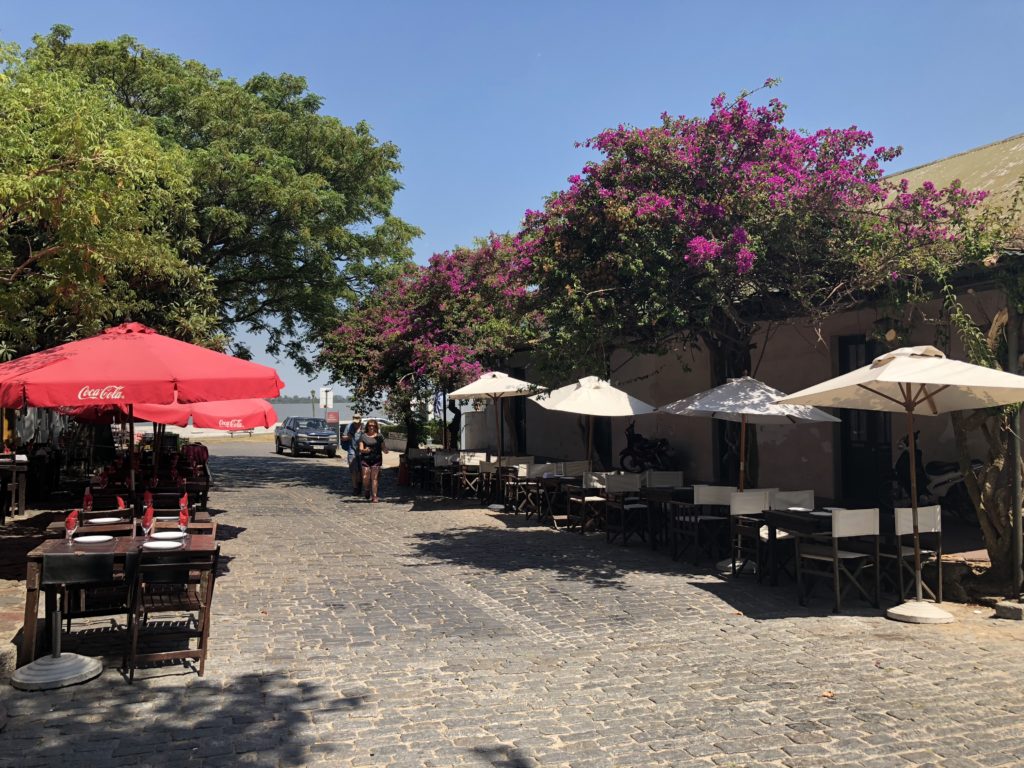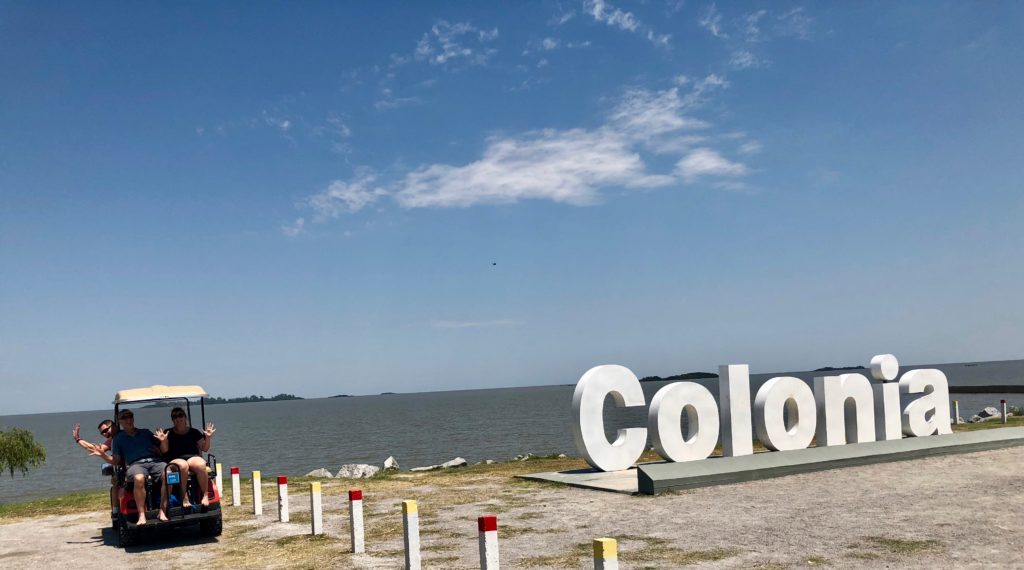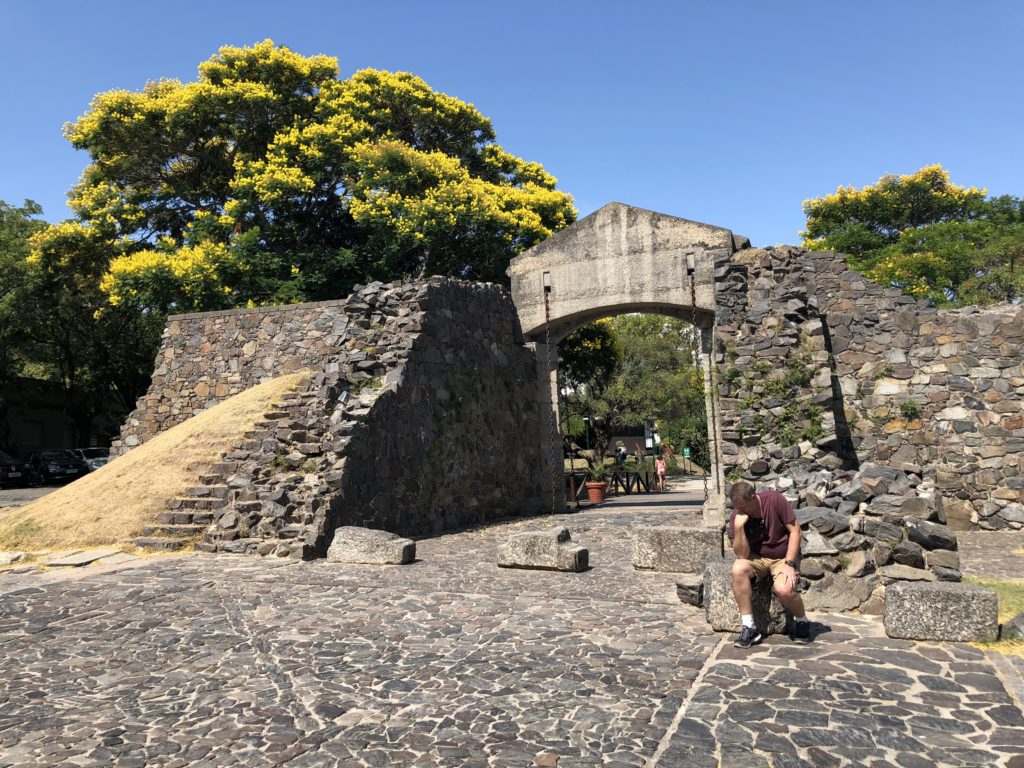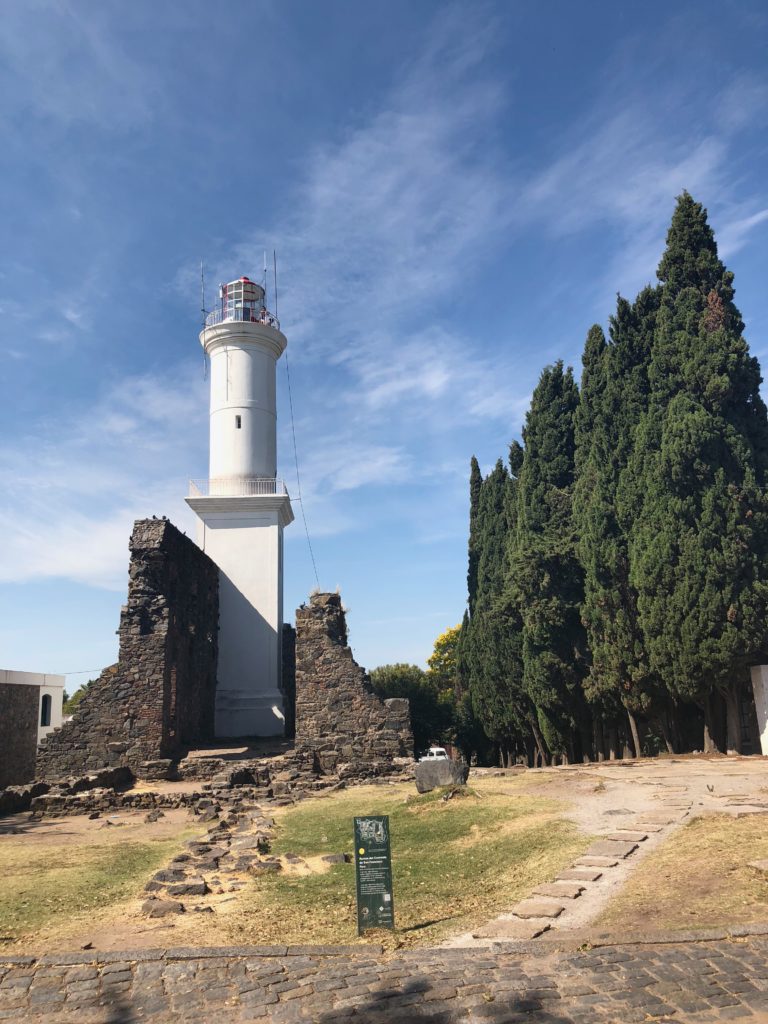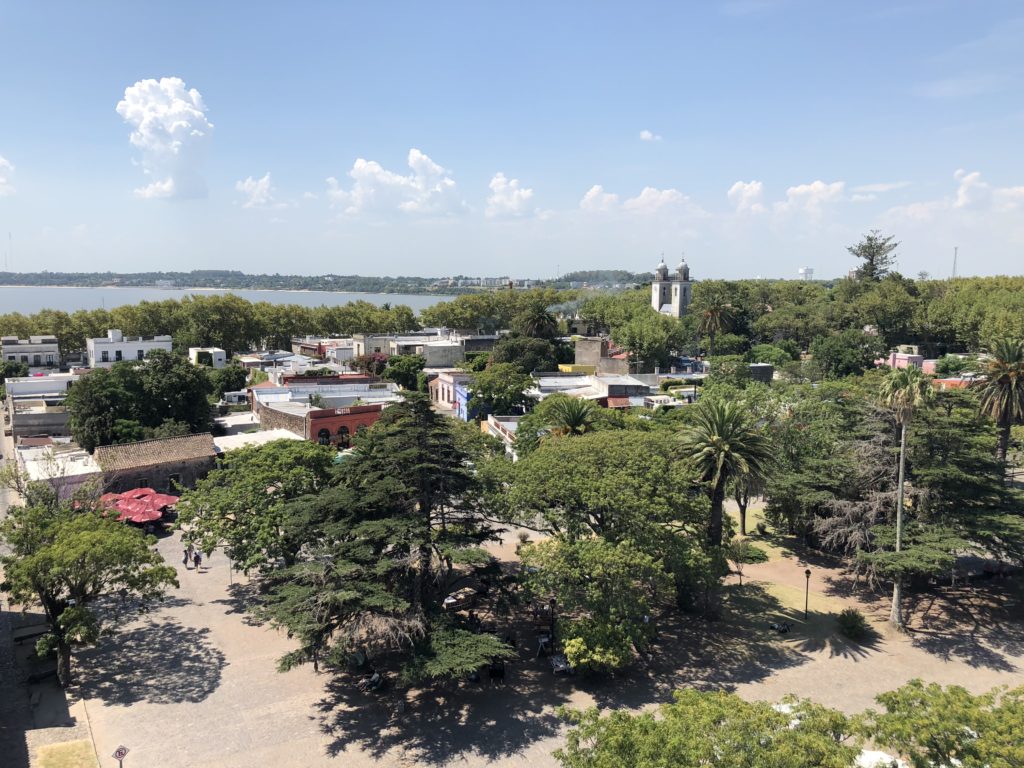This post is WAY overdue! Our trip to Buenos Aires took place Feb. 3-9. Sooooo… it’s time to catch up …
We first registered on the website Trusted Housesitters to find people to care for our cat, Ella, when we traveled. However, we’ve since discovered an unexpected perk: These are cool people! We’re making interesting friends with people from all over the world. For our weeklong trip to Buenos Aires, we were thrilled to welcome Aideen and Jonny, newlyweds from the UK, to hang out at our apartment. We may even visit them in Ireland some day! This is becoming an iconic pose on my blog: Us with our latest pet sitters, drinking pisco sours at Tiramisu.
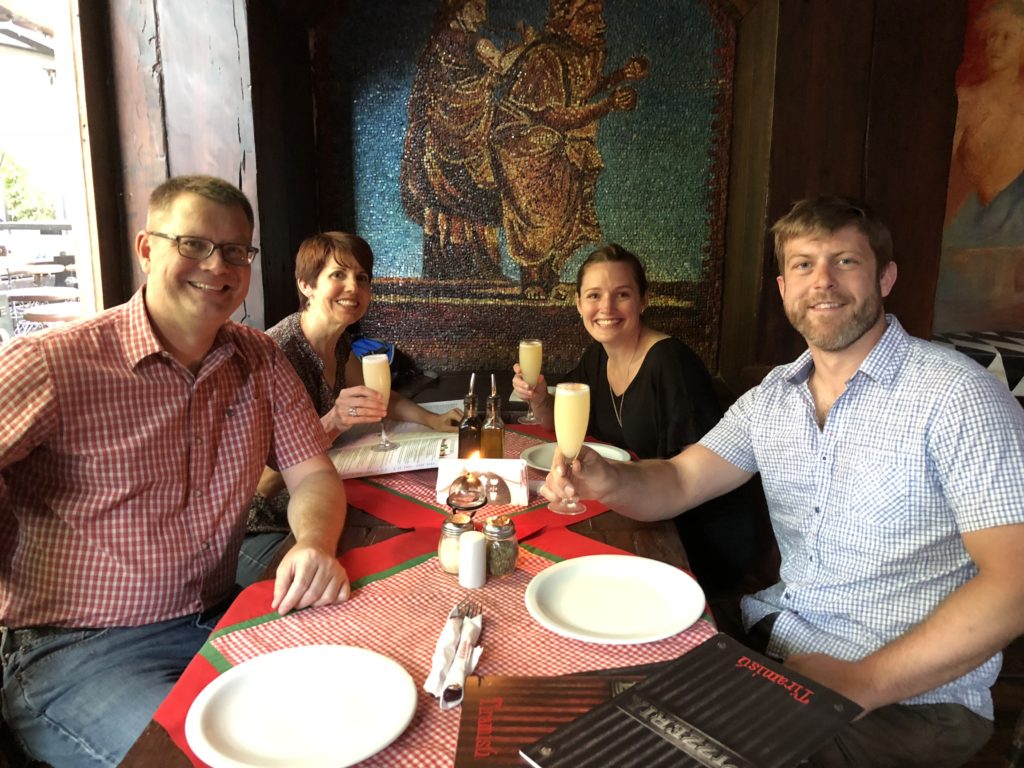
We were traveling with our friends, Nancy and Jim, so I had booked two Airbnb apartments in the same Buenos Aires building. Unfortunately, the apartment owner canceled at the last minute because of a maintenance issue. Impulsively, Nancy and I each booked separate Airbnb’s in the same district, but they turned out to be a fair distance apart. Ours was a tiny studio, and theirs was a huge house. Bummer.
Right off the bat, we found a food truck festival and had a fun evening drinking a lot of Argentinian wine and pigging out.
I waited for 30 minutes (!) to get a hamburger from this food truck, while the rest of them gobbled up their delicious dinners from other trucks.
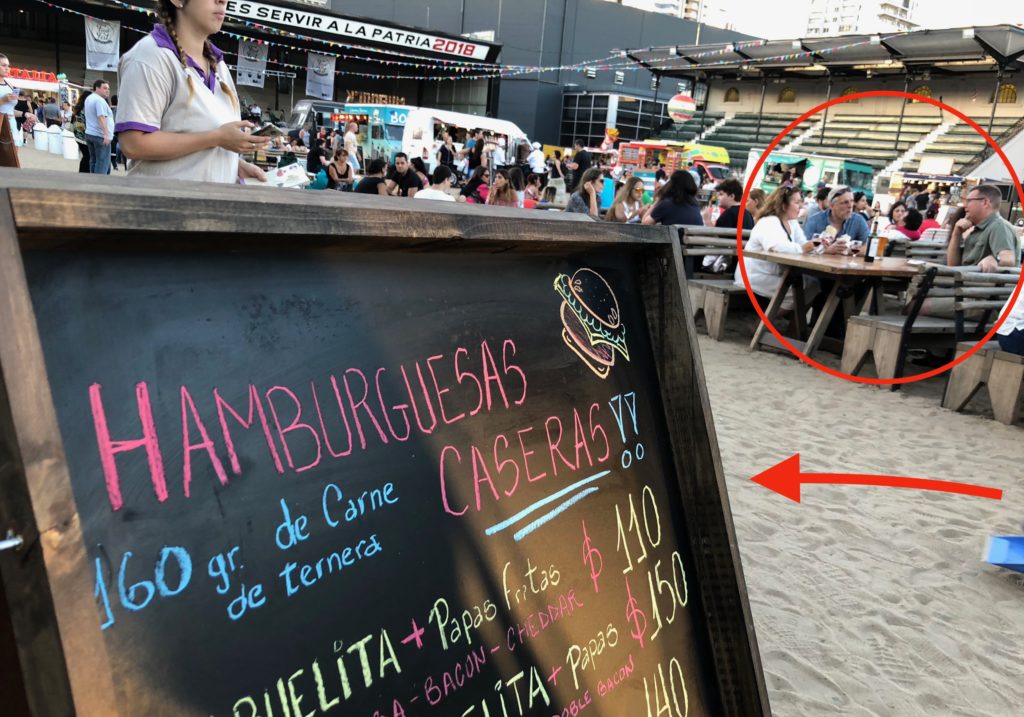
Returning our “rented” wine glasses at the end of the night.
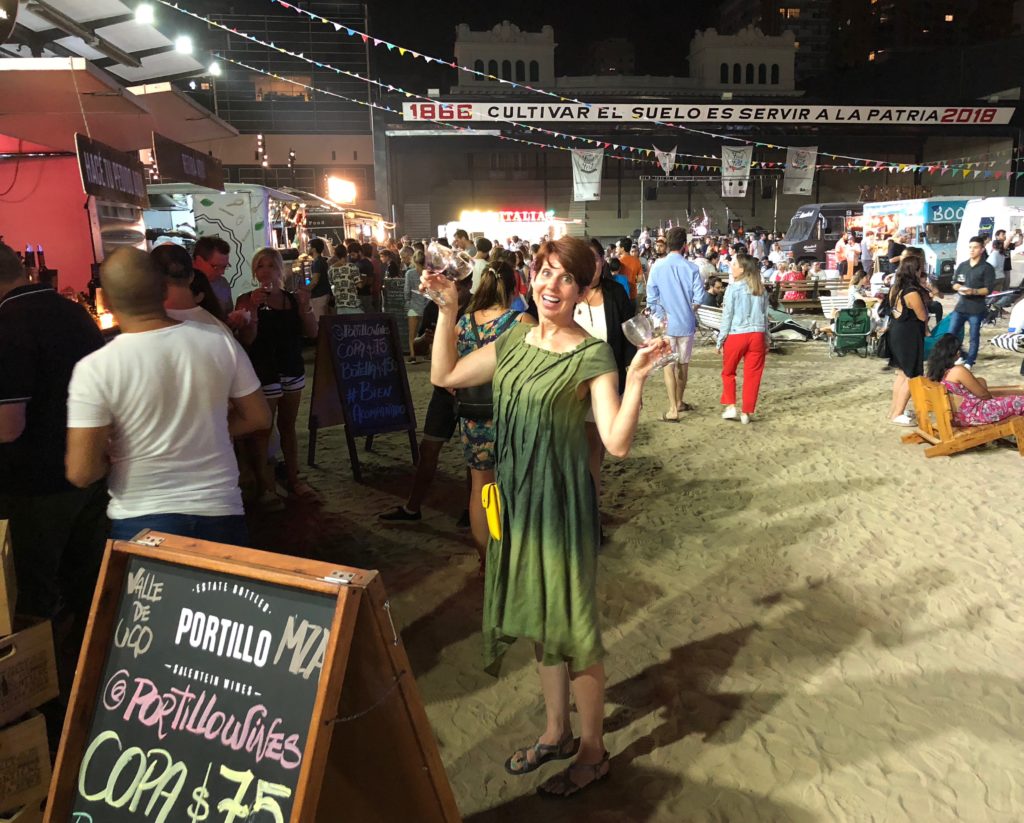
It’s possible we drank a bit too much wine … Jim and I couldn’t resist climbing this tree on the way out. A security guard blew his whistle at us, which seemed ridiculously funny at the time.
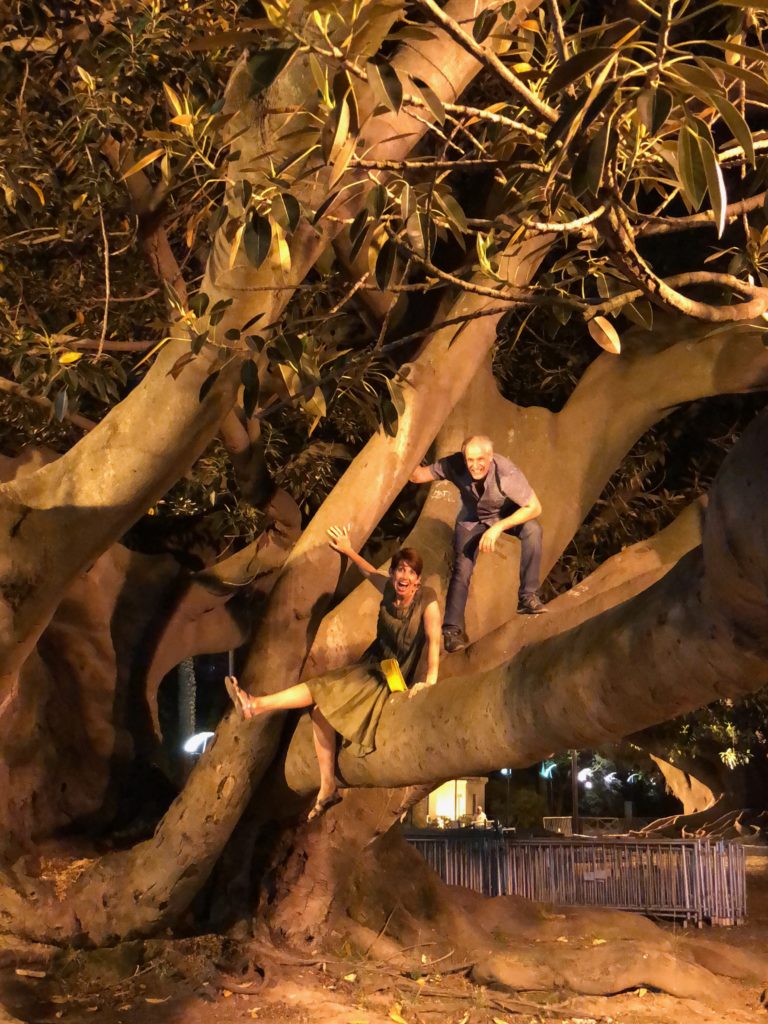
The next morning, we took the subway to the Independencia stop and strolled up the cobblestone streets to check out the Feria de San Telmo, the Sunday market. Booths lined Defensa Street with vendors selling everything from crocheted Barbie clothes and mass-produced souvenirs to stunning original artwork. We even ran into one of Ella’s previous cat sitters, Andrea, who makes and sells pompom earrings from Peruvian wool.
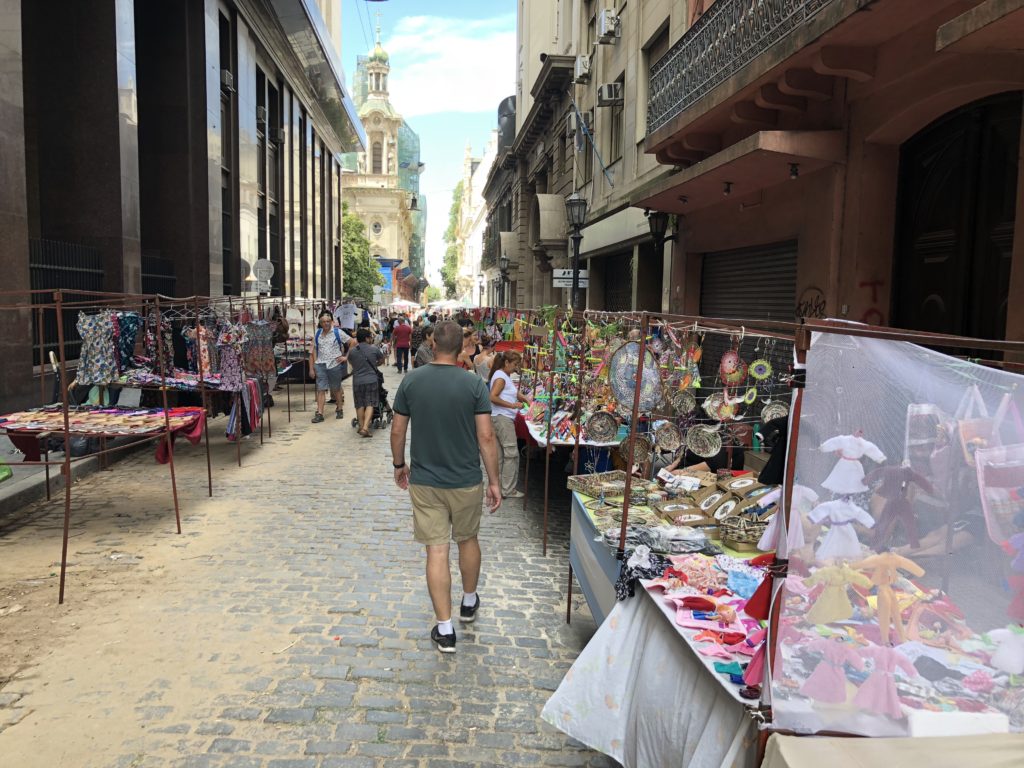
The stalls lined the road leading to Plaza Dorrego, which overflowed with more traditional antique market fare. Tango dancers staged a show in the square, and the surrounding restaurants offered their own tango entertainment. We paused for a beer at a café and watched the dancers for awhile. It was so intimate and sexy that I felt creepy taking photos. However, I did get a little footage of the outdoor show despite an obstructed view.
Normally, I am not an impulse shopper, but one particular booth at the market grabbed my attention. I just couldn’t take my eyes off a huge whimsical painting of a cow, so I bought it! Here it is, framed in my Santiago study. I love it! (Unfortunately, I lost the artist’s card. If you happen to visit the San Telmo market, please please please look for this artist and send me her contact info.)
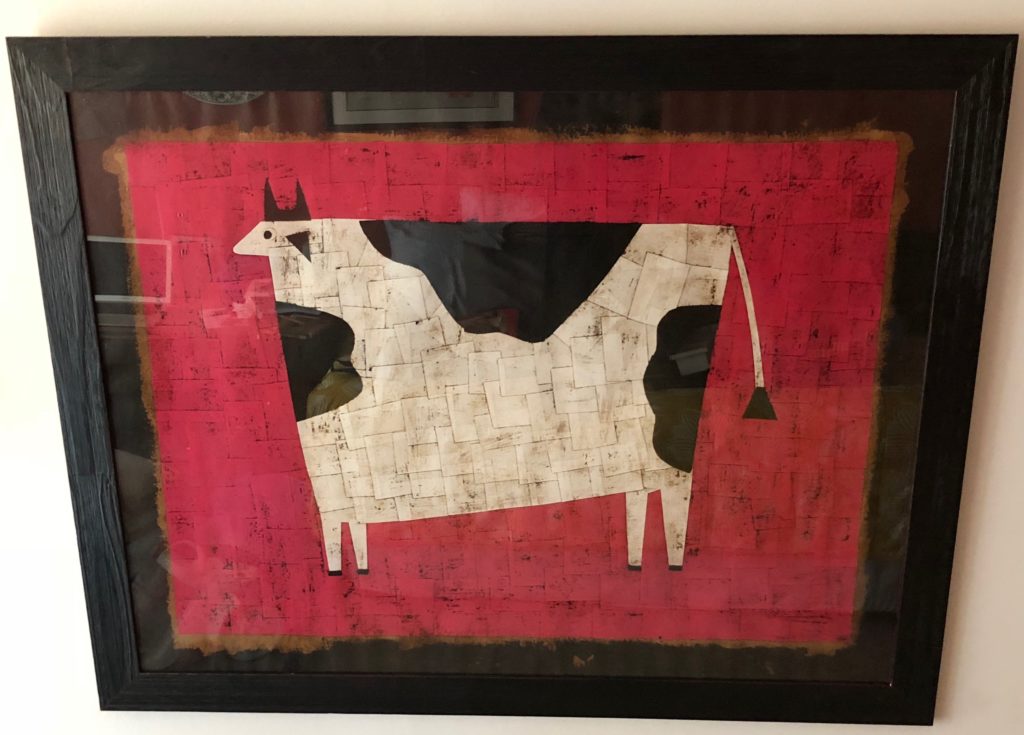
Monday morning, we paid a quick visit to Al Ateneo Grand Splendid. Built as a performing arts theater in 1919 and converted to a cinema in 1929, the building was nearly demolished at the turn of the century during a downturn in the economy. Today, a coffee bar fills the stage where famous tango dancers used to draw crowds, and the audience seating has given way to bookshelves. According to the website Atlas Obscura:
Though some lament the loss of a beloved cinema, it is now thanks to the Grupo Ilhsa – which owns 40 bookshops, including the flagship Grand Splendid location – that visitors can still revel in this wondrous monument of a bygone era. While the selection of books on offer is standard chain store fare and mostly in Spanish, bibliophiles will find the staggeringly opulent display of books to be reason enough to pay El Ateneo Grand Splendid a visit.
That afternoon, Tony and I met up with Buenos Aires Free Walks for a tour of the city center. We started at Palacio del Congreso, the seat of the Argentine National Congress, with our passionate young guide, Martin, and about 30 other people. The three-hour tour gave us a good overview of of Argentina’s history and economy in a nutshell.
The next morning, the four of us joined Marika with BA Bikes for “North Circuit” tour. This was definitely a highlight, and I wish we’d had time to tour the “South Circuit,” as well. Next time!
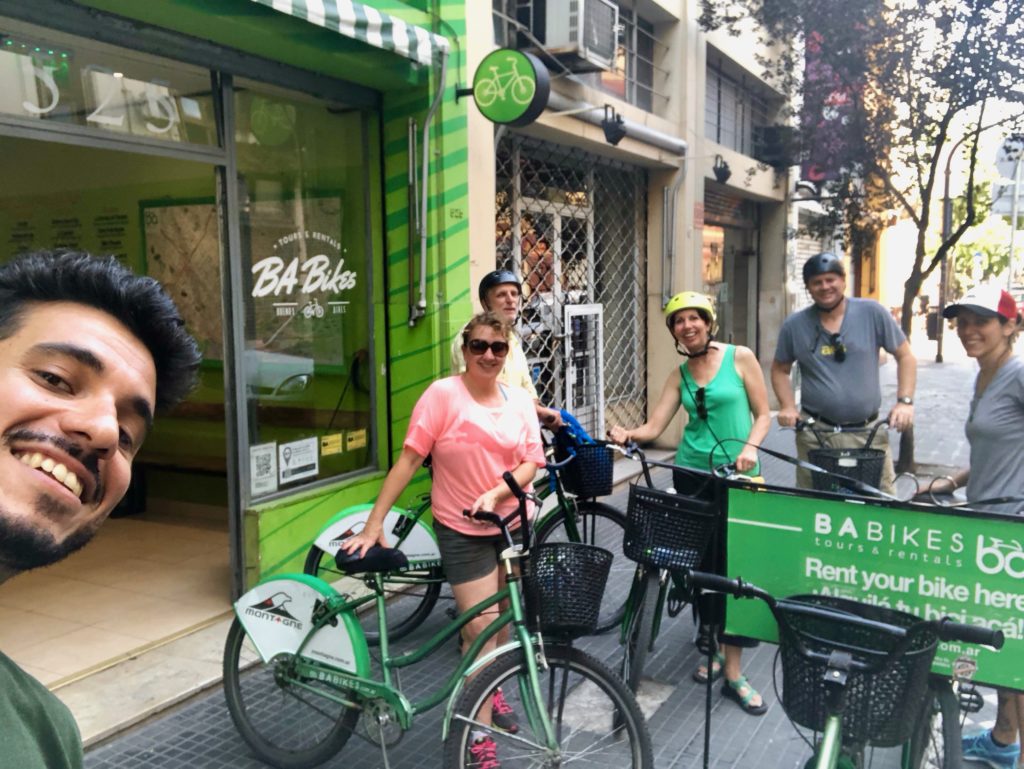
At the Recoleta Cemetery, we locked up our bikes and walked around. The mausoleums ranged from simple to insanely ostentatious, and we were surprised at how many were clearly neglected. There’s nothing like a forgotten tomb to remind you of our fleeting impact in the world. Through the broken windows, we could see caskets draped with decayed and torn fabric and bouquets of silk flowers coated in dust. Weeds sprouted from the carved and cracked marble facades. Pretty humbling.
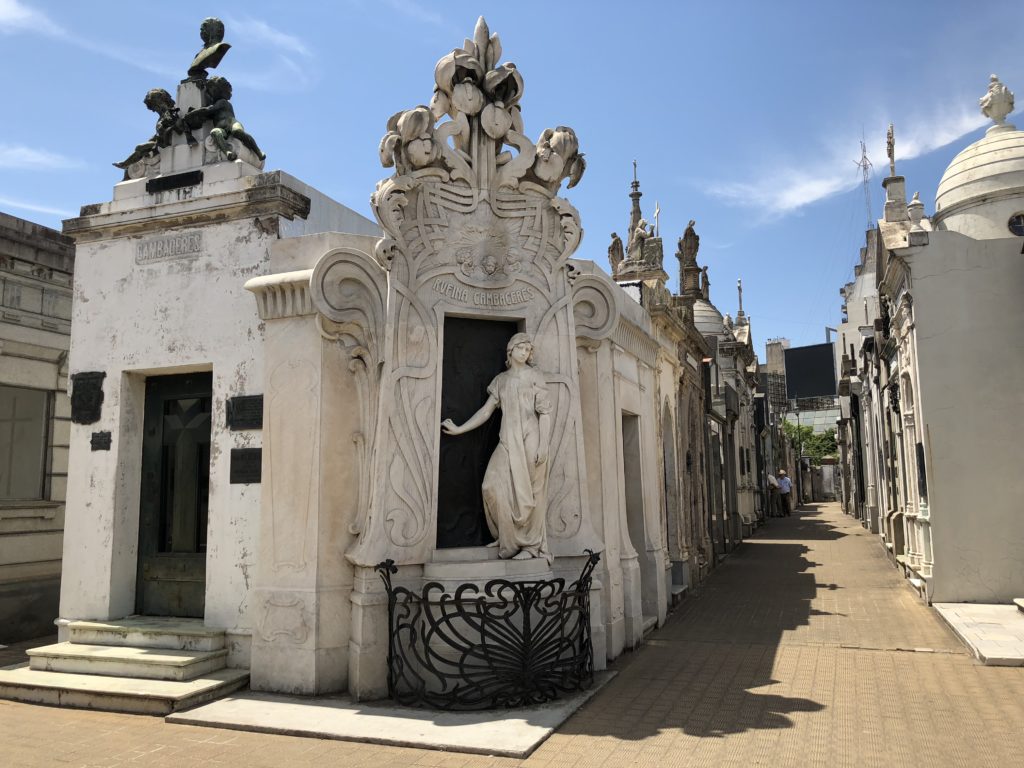
The most popular destination in the cemetery was the tomb of Eva Peron. I expected a huge monument, but she was buried in the Duarte family’s mausoleum with only a few plaques on the front to signify its importance.
Eva Peron was Argentina’s first lady from 1946 to 1952 and became and iconic, controversial celebrity. She died at the age of 33 from cancer, but her body took more than 20 years to reach its final resting place. A New York Times article sums up the complicated story nicely:
After her death in 1952, the corpse was put on display at the headquarters of the General Confederation of Labor, where admirers came by the tens of thousands with candles and flowers and held vigils. When Mr. Peron was toppled in 1955, military leaders determined that they had to keep Eva Peron’s body from opposing political forces but they did not know how best to accomplish that.
Finally, in April 1957, the military put the body on a ship bound for Italy where it was buried under a false name. Then in 1971, Gen. Alejandro A. Lanusse overthrew Gen. Juan Carlos Ongania, the Argentine military leader. In exchange for Juan Peron’s blessing from exile, General Lanusse agreed to hold elections, restore Mr. Peron’s citizenship, provide presidential back pay of $50,000 and give him the body of Eva.
The body was exhumed from a small cemetery near Rome and transported in a silver coffin to Juan Peron’s villa in Madrid. Italian and Spanish police officers accompanied the hearse. Mr. Peron kept the body in an open casket on the dining room table of his villa, where he later built a shrine for it in the attic.
In November 1974, after the death of Mr. Peron, Eva Peron’s body was brought back to Argentina by Isabel (Peron’s third wife), who succeeded him as President. It lay in state in the presidential residence until Mrs. Peron was overthrown in 1976, when the new military rulers had the body buried in the Duarte family tomb under three plates of steel in the Recoleta Cemetery in Buenos Aires.
The Palacio Barolo, an office building near the National Congress, was mentioned by several tour guides, so we decided to check it out. Completed in 1923, the building was Buenos Aires’ tallest skyscraper until 1936. But what lured us to learn more was its weird connection to Dante’s Divine Comedy. The Atlas Obscura website says:
Conceived of by cotton magnate Luis Barolo and architect Mario Palanti as a secular temple, the Palacio Barolo serves as an allegory for the structure and content of Dante Allighieri’s Divine Comedy.
Believing that Europe had begun drifting toward collapse, Barolo intended the Palacio Barolo to house Dante’s ashes far away from a disintegrating European continent. His partnership with Italian architect Mario Palanti, also a Dante aficionado, resulted in the design of a structure that included the numbers most prevalent in the Divine Comedy: The building’s 22 floors (Dante divided the Divine Comedy into 22 stanzas) sit upon a foundation whose measurements conform to the golden ratio. And, like Dante’s work, the building invites visitors to progress through hell, purgatory, and heaven as they climb to the top.
The lobby, a central hall adorned with inscriptions of Latin verse and monster statues, radiates out from a central dome into nine vaulted archways, which represent the nine circles of hell as described by Dante in the Inferno. Throughout these first three floors are geometric figures representing alchemical symbols for fire, the colors of the Italian flag, and Masonic symbols on the walls, floors, and still-operating antiquated elevators.
The highest levels, representing heaven, begin at an observation deck with one of the few 360 degree views of the sprawling city of Buenos Aires. Climbing a few more floors to the building’s highest point (100 meters, analogous to the 100 cantos of the Divine Comedy), one arrives at a still-working lighthouse.
Like the Pillars of Hercules at the mouth of the Mediterranean, Pilanti intended this tower light and another of his buildings, the Palacio Salvo in Montevideo, Uruguay, to serve as a welcome to visitors arriving from the Atlantic to the Rio de la Plata estuary. The ornament above the lighthouse, a figure of the Southern Cross constellation, aligns with the actual constellation on July 9th, Argentine Independence Day.
For a city with so much great art and tasty food, Buenos Aires made it particularly hard for us to spend money. Many places wouldn’t take a credit card, and most banks wouldn’t give us any cash. We watched locals form long lines each day until the ATMs ran out of money, and we often had to visit several bank branches before we found an ATM that would spit out some pesos.
One night, we met up with Nikki, a friend we knew in Laos who now works in Buenos Aires. We had planned to buy her dinner, but our efforts to find money that afternoon were unsuccessful. Embarrassing. Still, we had a great night at a fabulous Armenian restaurant called Sarkis.
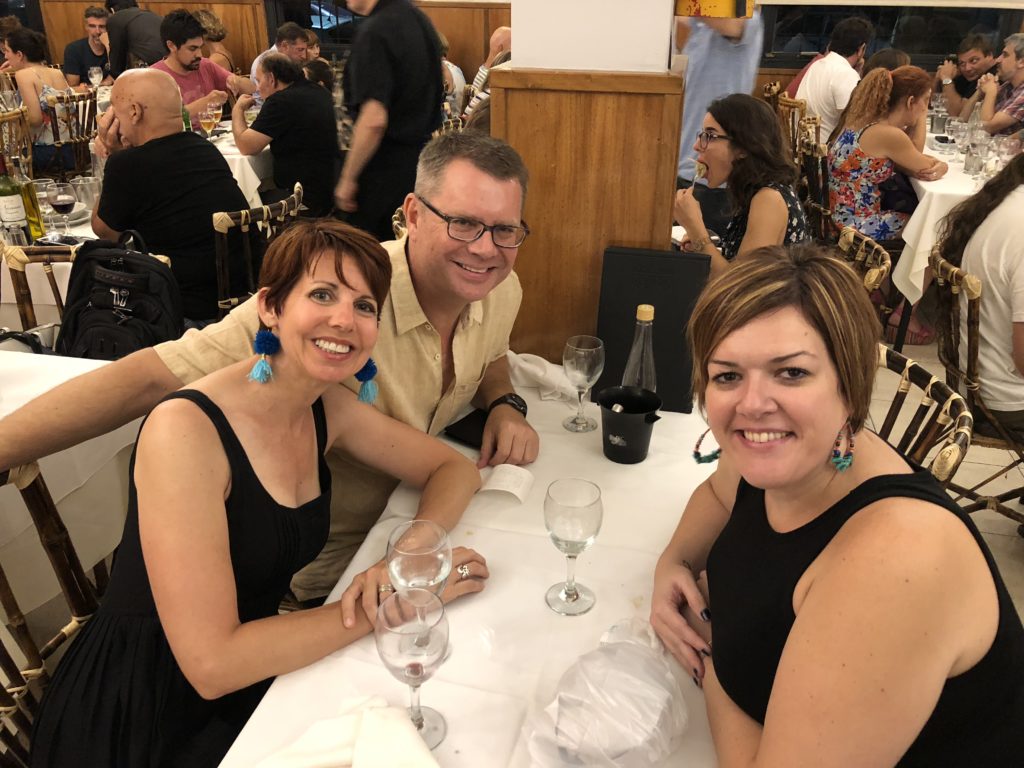
Another night, we met up with Tom and Angie, friends from our days in New Delhi.
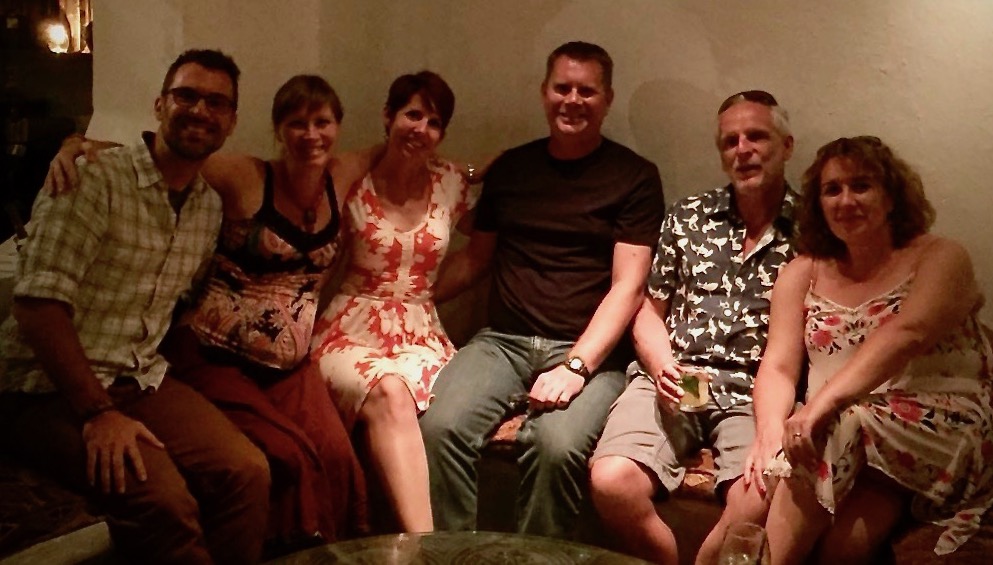
Although we were tempted to take another bike tour to a different part of BA, we decided instead to take a boat to a different country. We caught the Buquebus ferry for a one-hour journey from Argentina to Uruguay and spent the day in the port town of Colonia, a UNESCO World Heritage Site. Portuguese soldiers occupied the town in 1680, and the colony bounced back and forth between Portugal and Spain for more than 100 years. It was later incorporated into Brazil until after Uruguay was granted independence around 1828. The city is known for its quaint historical district with cobblestone streets shaded by sycamore trees and lined with charming shops and restaurants.
We walked around a bit and then rented a golf cart to check out the beach. After a relaxing lunch at a garden café, we climbed to the top of the lighthouse at the ruins of the Convent de Sacramento.
The next day, Jim and Nancy spent another day exploring Buenos Aires while Tony and I headed back to Santiago. Our house sitters moved on to northern Chile a few hours before we got home, but they left us with a clean apartment and a happy cat. With just a few days of freedom left before school started, we crammed in one more weekend of fun. Stay tuned!

